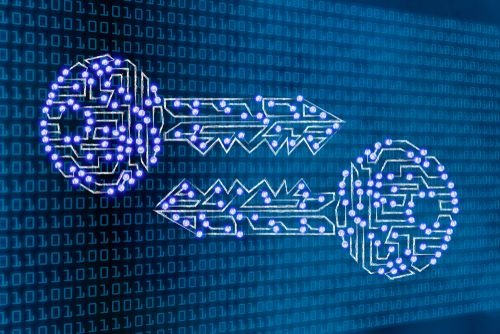
In recent years, technological advancements have given rise to a powerful and potentially dangerous tool: deepfakes. Deepfakes use artificial intelligence (AI) to create highly realistic but fake images, videos, or audio recordings of people. While deepfakes can be used for entertainment and creative purposes, they are increasingly being employed to spread misinformation, manipulate public opinion, and deceive the public. This article explores the technology behind deepfakes, the potential risks they pose, and the ways in which they can mislead the public.
What Are Deepfakes?
Deepfakes are synthetic media created by AI algorithms, typically through a technique called deep learning. This technique involves training a neural network—an AI model—on vast datasets of images, videos, or audio to learn and mimic the characteristics of a particular person or object. Deepfakes can manipulate existing media to create convincing but entirely fake content, such as a video of a politician saying something they never actually said or an audio clip of a celebrity making false statements.
Deepfakes can be created using two main approaches:
- Generative Adversarial Networks (GANs): GANs consist of two neural networks: a generator and a discriminator. The generator creates fake media, while the discriminator evaluates its authenticity. The two networks compete against each other, with the generator continuously improving its output until the discriminator can no longer distinguish between real and fake content.
- Autoencoders: This technique involves training an AI model to compress and then reconstruct data (like a person’s face) using two neural networks: an encoder and a decoder. The model learns to recreate realistic facial expressions or movements, which can then be applied to another person’s image, creating a deepfake.
The Threat of Deepfakes to Misinformation
Deepfakes pose a significant threat to public trust and the information ecosystem for several reasons:
- High Realism and Deception:Deepfakes are highly realistic and can be challenging to distinguish from genuine content. This makes them particularly effective at deceiving viewers, who may believe that they are seeing or hearing something real. For example, a deepfake video of a world leader announcing a fake policy or military action could cause panic, confusion, or even international conflict before it is revealed to be false.
- Amplification of Misinformation:Deepfakes can amplify the spread of misinformation by making false information more convincing and shareable. When combined with social media platforms, where content can go viral within minutes, deepfakes can quickly reach millions of people. This rapid dissemination of false information can have serious consequences, influencing public opinion, elections, and even social unrest.
- Undermining Trust in Media:The existence of deepfakes can erode public trust in legitimate media sources. As deepfakes become more sophisticated, people may start to question the authenticity of all digital content, including genuine news reports, videos, and audio recordings. This phenomenon, known as the “liar’s dividend,” allows bad actors to dismiss credible information as fake or manipulated, creating confusion and uncertainty.
- Targeting Individuals:Deepfakes can be used to target individuals for malicious purposes, such as harassment, blackmail, or defamation. For example, deepfake technology can create fake videos or images that portray a person in a compromising or defamatory situation. These manipulated media can ruin reputations, damage careers, or cause psychological harm to the individuals involved.
- Influencing Elections and Political Discourse:Deepfakes pose a particular threat to democratic processes, as they can be used to manipulate political discourse and influence elections. A deepfake video of a political candidate making controversial remarks, engaging in unethical behavior, or expressing support for extremist views could sway voters and alter election outcomes. Similarly, deepfakes could be used to discredit public officials or undermine trust in democratic institutions.
Real-World Examples of Deepfakes and Misinformation
Several real-world incidents have highlighted the potential dangers of deepfakes and their ability to mislead the public:
- Political Deepfakes:In 2018, a deepfake video emerged of former U.S. President Barack Obama seemingly making inflammatory statements. The video was quickly debunked as a deepfake created by filmmaker Jordan Peele to raise awareness about the technology’s potential dangers. However, the incident demonstrated how easily deepfakes could be used to create realistic but false videos of public figures, potentially influencing public opinion.
- Deepfakes in Social Media:In 2019, a deepfake video of Facebook CEO Mark Zuckerberg surfaced online, in which he appeared to boast about his control over billions of people’s stolen data. The video, created by an artist, was intended as a critique of Facebook’s handling of user data, but it also highlighted how deepfakes could be used to manipulate social media narratives and spread misinformation.
- Deepfake Audio Scams:In 2019, criminals used AI-generated deepfake audio to impersonate a CEO’s voice and demand a fraudulent transfer of €220,000 from a UK-based energy firm’s subsidiary. The scam was successful, illustrating how deepfake audio can be used to deceive individuals and organizations for financial gain.
- Deepfake Revenge Porn:Deepfake technology has been increasingly used to create non-consensual explicit content, also known as “deepfake revenge porn.” Women are particularly targeted by this malicious use of deepfakes, with their faces being superimposed onto explicit videos without their consent. This practice has led to severe emotional and psychological harm, invasion of privacy, and damage to personal reputations.
How Deepfakes Can Mislead the Public
Deepfakes can mislead the public in several ways:
- Manipulating Public Perception:Deepfakes can be used to manipulate public perception by creating false narratives about individuals, events, or issues. For example, a deepfake video of a political leader making offensive remarks could damage their reputation and influence voters. Similarly, deepfakes could create false narratives about social or political movements, inciting hatred or violence.
- Sowing Confusion and Distrust:The mere existence of deepfakes can create confusion and distrust among the public. As people become aware of the technology’s capabilities, they may start to question the authenticity of all digital content, including genuine news reports or official statements. This erosion of trust can weaken democratic institutions, undermine public discourse, and make it more challenging to identify the truth.
- Spreading Disinformation and Propaganda:Deepfakes can be used to spread disinformation and propaganda, particularly in the context of political campaigns, conflicts, or social movements. Bad actors can create deepfake content that supports their agenda, discredits their opponents, or promotes false information. When combined with social media, deepfakes can reach large audiences quickly, making it easier to spread disinformation.
- Impersonation and Fraud:Deepfakes can be used for impersonation and fraud, deceiving people into believing they are communicating with a legitimate person. For example, deepfake audio or video could be used to impersonate a CEO, government official, or public figure to extract sensitive information, money, or favors. This form of deception can have serious consequences, including financial loss, legal liabilities, and reputational damage.
- Undermining Journalistic Integrity:Deepfakes can undermine the integrity of journalism by making it easier to create fake news stories and discredit legitimate reporting. For example, deepfake content could be used to fabricate interviews, manipulate quotes, or alter footage to create a false narrative. This practice can erode trust in journalism and make it more challenging for the public to discern credible sources from fake ones.
Combating Deepfakes and Misinformation
Given the potential harm caused by deepfakes, several strategies can be employed to combat their spread and protect the public:
- Developing Detection Technologies:Researchers and tech companies are developing AI-based tools to detect deepfakes and identify manipulated content. These tools use machine learning algorithms to analyze digital artifacts, such as pixel inconsistencies, audio anomalies, or metadata, to determine whether a piece of content has been altered. Investing in robust detection technologies is crucial for staying ahead of the rapidly evolving capabilities of deepfake creators.
- Promoting Digital Literacy and Public Awareness:Educating the public about the existence of deepfakes and their potential impact is essential for building resilience against misinformation. Digital literacy programs can help people recognize the signs of manipulated content, critically evaluate information sources, and make informed decisions about what they see and share online.
- Implementing Legal and Regulatory Measures:Governments can introduce legal and regulatory measures to address the misuse of deepfakes. For example, laws could be enacted to criminalize the creation and distribution of deepfakes for malicious purposes, such as harassment, blackmail, or electoral interference. Legal frameworks should also provide clear guidelines for accountability, protecting individuals’ privacy, and safeguarding free speech.
- Encouraging Ethical Standards for AI Development:The tech industry can play a role in combating deepfakes by adopting ethical standards for AI development and use. Companies developing AI tools and platforms should prioritize transparency, privacy, and accountability, ensuring their technologies are not misused to harm individuals or society. Collaboration between tech companies, governments, and civil society organizations is necessary to establish best practices and ethical guidelines.
- Strengthening Social Media Policies:Social media platforms play a crucial role in the spread of deepfakes and misinformation. Platforms should implement stricter content moderation policies, such as flagging or removing deepfake content that violates community guidelines. They can also use AI-powered detection tools to identify and label potential deepfakes, providing context and warning users about manipulated media.
- Promoting Fact-Checking and Verification:Fact-checking organizations and journalists can help combat deepfakes by verifying the authenticity of digital content and providing accurate information. Media outlets should use verification techniques, such as reverse image searches, metadata analysis, and cross-referencing with credible sources, to ensure the integrity of their reporting.
Conclusion
Deepfakes represent a powerful and potentially dangerous tool for spreading misinformation and misleading the public. As deepfake technology becomes more sophisticated and accessible, the risks it poses to trust, democracy, and social stability are likely to increase. While deepfakes can be used creatively and for entertainment purposes, their potential for harm cannot be ignored.
To mitigate the impact of deepfakes, a multi-faceted approach is necessary, combining technological innovation, public awareness, legal regulation, and collaboration across sectors. By developing detection tools, promoting digital literacy, implementing ethical standards, and strengthening social media policies, society can work towards minimizing the risks associated with deepfakes and ensuring that technology is used responsibly for the benefit of all.









